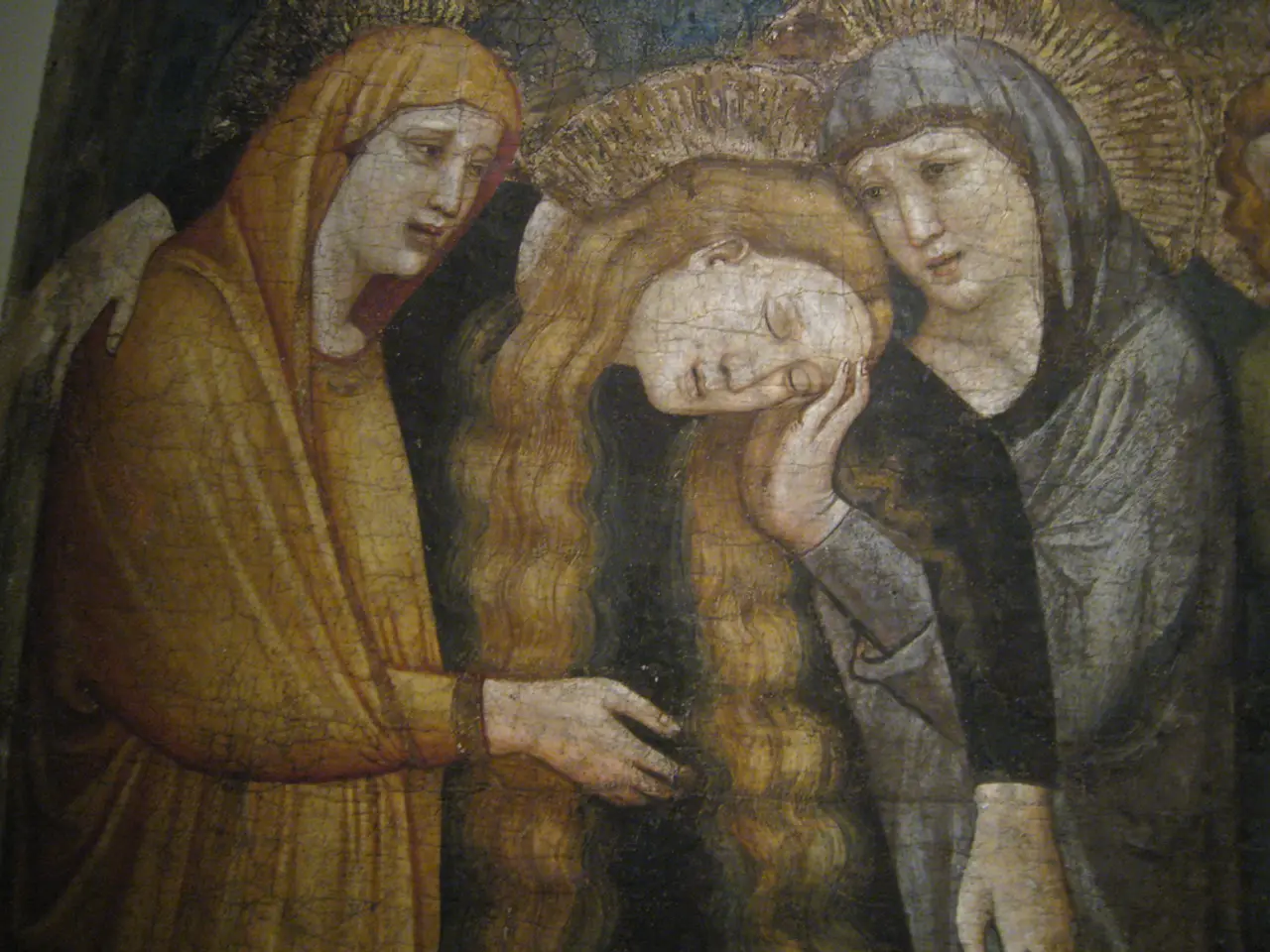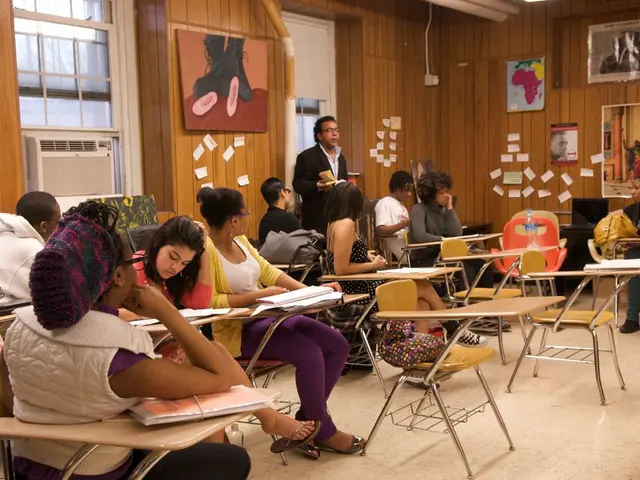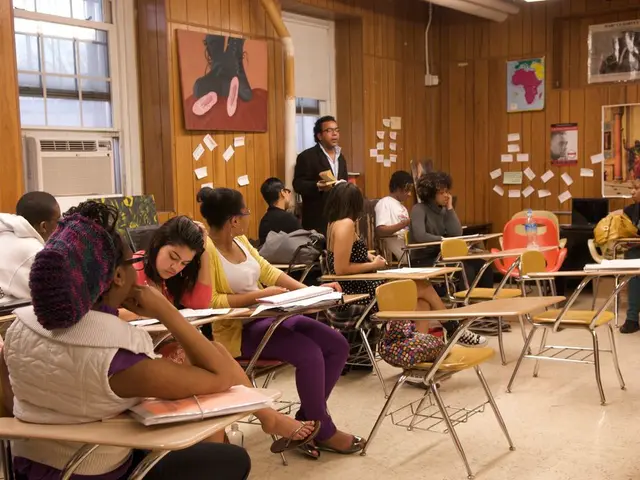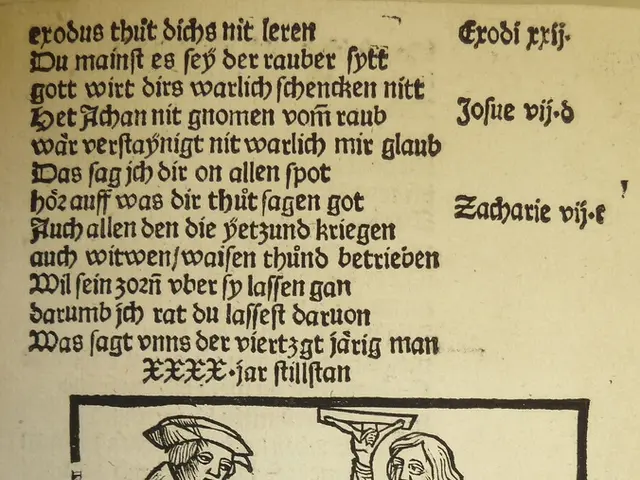Comparative Analysis Method in IB Visual Arts: Guidelines for Examination and Essential Components
In the realm of International Baccalaureate (IB) Visual Arts, the Comparative Study (CS) is a crucial component that invites students to delve deep into the world of art. This study focuses on comparing and contrasting at least three artworks created by different artists from various cultures and time periods.
A successful IB Visual Arts CS is a well-structured, research-based presentation that sheds light on shared themes or subject matter, while analysing formal qualities, meaning, and cultural significance.
Introduction
The artworks selected for comparison should be introduced in the opening, along with the purpose and focus of the comparison. A guiding research question or theme relevant to visual arts should be outlined.
Detailed Description and Visual Analysis of Each Artwork
Each artwork under scrutiny is described in detail, highlighting its formal visual elements such as composition, colour, line, shape, and texture. Contextual background, including cultural, historical, or personal information, is also provided.
Comparative Exploration
The comparative exploration stage involves examining similarities and differences between the artworks concerning style, technique, meaning, or cultural significance. This stage helps to explore how each artwork reflects different perspectives or artistic traditions.
Use of Visual Arts Terminology
Throughout the study, it is essential to demonstrate strong knowledge and understanding by employing accurate and relevant art vocabulary.
Critical Reflection and Interpretation
Critical reflection and interpretation are key aspects of the IB Visual Arts CS. Provide insightful interpretation grounded in evidence, showing analytical skills and a greater understanding of the artworks’ importance within their artistic or cultural contexts.
Conclusion
The conclusion summarises the findings of the comparison, highlighting what has been learned about both artworks and their relationship to the visual arts discipline.
Visual Documentation
Clear images of the artworks analysed, properly referenced, are included to support the visual comparisons.
References and Citations
Full citations of all sources and artworks used are included to demonstrate research and credibility.
While much of this specifically applies to the IB Visual Arts CS (distinct from the Extended Essay), the overall focus is on a detailed, well-organised comparison rooted in art analysis and contextual understanding, maintaining a balance between descriptive and critical content.
The IB Visual Arts CS typically examines artworks across different cultures or time periods to reveal meaningful visual connections and distinctions. A common example of an IB Visual Arts CS is comparing three self-portraits by 20th-century artists from different countries: Alice Neel (USA), Frida Kahlo (Mexico), and Lucian Freud (UK).
The study should connect formal analysis with cultural understanding through a clear theme. The presentation format often includes images and text in a digital slideshow format.
Lastly, it is recommended that at least one artwork is seen firsthand to provide personal insight into the study. Reflection on how the study influences the student's own art practice is encouraged, especially for Higher Level (HL) students.
For tailored support in navigating the IB Visual Arts CS, resources like RevisionDojo can provide invaluable assistance. Proper citations and referencing of all sources is necessary to maintain academic integrity.
By following this comprehensive guide, students can embark on a rewarding journey of discovery, analysis, and interpretation in the IB Visual Arts Comparative Study.
A dedicated IB Visual Arts Comparative Study, much like the one focused on three self-portraits by Alice Neel, Frida Kahlo, and Lucian Freud, entails a multidimensional exploration of personal growth, education, and self-development through learning about various artists and their cultural backgrounds. In the process, students analyze artworks and their formal elements, develop their critical thinking and interpretive skills, and cultivate a deeper appreciation for visual arts.




